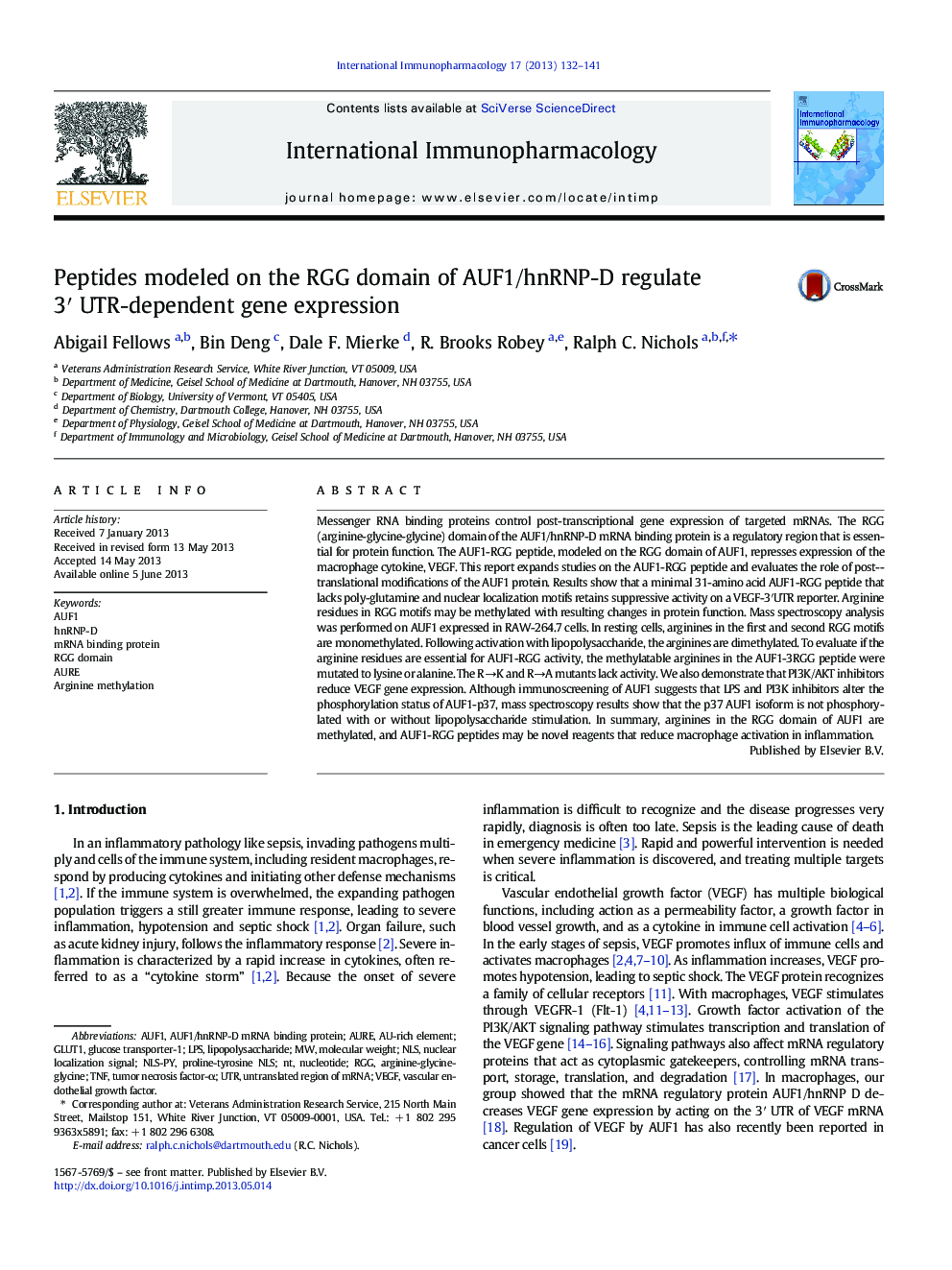| Article ID | Journal | Published Year | Pages | File Type |
|---|---|---|---|---|
| 5832943 | International Immunopharmacology | 2013 | 10 Pages |
Abstract
Messenger RNA binding proteins control post-transcriptional gene expression of targeted mRNAs. The RGG (arginine-glycine-glycine) domain of the AUF1/hnRNP-D mRNA binding protein is a regulatory region that is essential for protein function. The AUF1-RGG peptide, modeled on the RGG domain of AUF1, represses expression of the macrophage cytokine, VEGF. This report expands studies on the AUF1-RGG peptide and evaluates the role of post-translational modifications of the AUF1 protein. Results show that a minimal 31-amino acid AUF1-RGG peptide that lacks poly-glutamine and nuclear localization motifs retains suppressive activity on a VEGF-3â²UTR reporter. Arginine residues in RGG motifs may be methylated with resulting changes in protein function. Mass spectroscopy analysis was performed on AUF1 expressed in RAW-264.7 cells. In resting cells, arginines in the first and second RGG motifs are monomethylated. Following activation with lipopolysaccharide, the arginines are dimethylated. To evaluate if the arginine residues are essential for AUF1-RGG activity, the methylatable arginines in the AUF1-3RGG peptide were mutated to lysine or alanine. The RâK and RâA mutants lack activity. We also demonstrate that PI3K/AKT inhibitors reduce VEGF gene expression. Although immunoscreening of AUF1 suggests that LPS and PI3K inhibitors alter the phosphorylation status of AUF1-p37, mass spectroscopy results show that the p37 AUF1 isoform is not phosphorylated with or without lipopolysaccharide stimulation. In summary, arginines in the RGG domain of AUF1 are methylated, and AUF1-RGG peptides may be novel reagents that reduce macrophage activation in inflammation.
Keywords
Related Topics
Life Sciences
Immunology and Microbiology
Immunology
Authors
Abigail Fellows, Bin Deng, Dale F. Mierke, R. Brooks Robey, Ralph C. Nichols,
